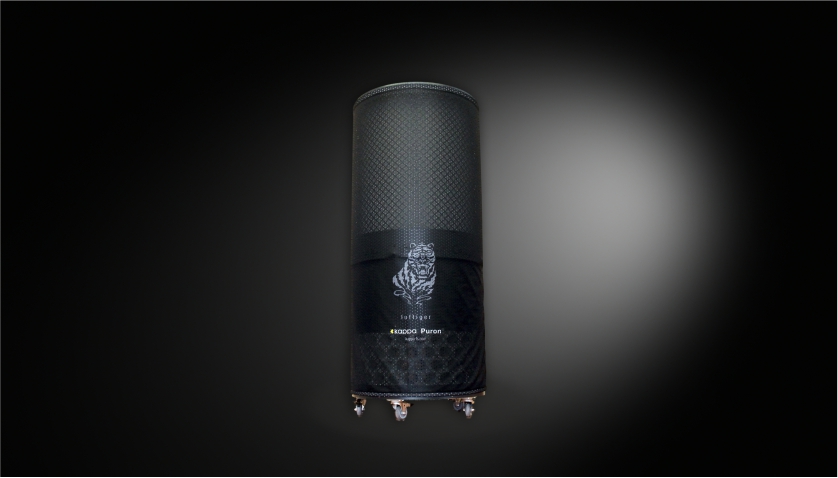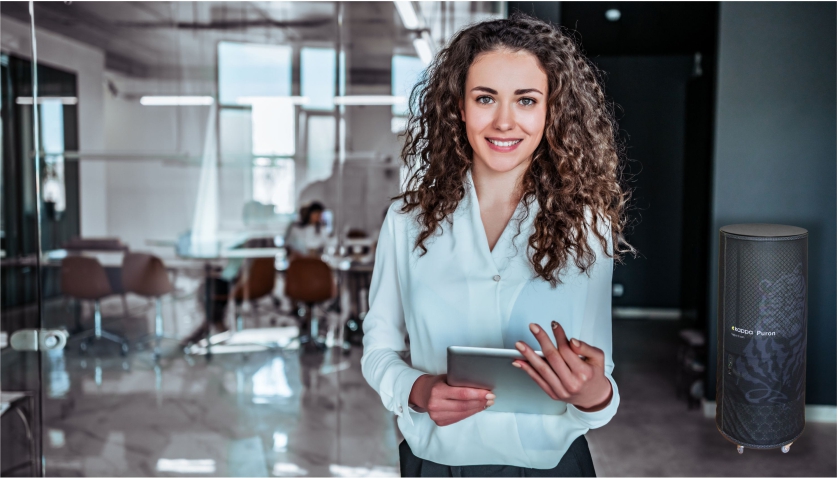VACE Digital Solutions in Linz plays a pioneering role when it comes to excellent indoor air.
The offices are a hive of activity. Meeting rooms and workstations have been sparsely occupied in recent months. Whether it's flu or coronavirus, it's an excellent reservoir for spreading and causing sick leave. From a business perspective, this is an administrative challenge.
After two years of the pandemic, offices are now bustling again. While meeting rooms and workstations have been sparsely occupied recently, workers and teams are increasingly returning to the familiar office environment. However, this is not doing the virus any harm. On the contrary - it provides an excellent reservoir for the virus to spread and cause short-term sickness absence. From the company's point of view, this is an administrative challenge. But many employees are also feeling uneasy due to the increased number of people in the company.
We can work together again and in teams
VACE Digital Solutions has taken appropriate precautions: a new indoor air concept that focuses on the health of employees. The aim was for teams to not only feel safe during meetings and in the workplace, but to be safe.
DI Klaus Kremmair, Managing Director of VACE Systemtechnik GmbH, describes the changed value systems as follows: “These days, it's not enough to put a fruit basket in the office. Highly qualified employees demand a holistically optimized workplace from employers. The pandemic has led to employees increasingly working from home and paying more attention to good air quality. With our new indoor air concept, we have found a way to meet the needs of our teams and offer them consistently high-quality indoor air. We can now finally work together in teams again. An investment that not only has a positive impact on employer relations, but also on our productivity.”
Room air filter in the office for healthy indoor air
Mr. Kremmair is talking about the Kappa Puron® SC room air filter, a high-performance air purifier with HEPA class H14 filter elements. This certification guarantees that 99.995% of all airborne pollutants such as viruses, bacteria and pollen are removed. Out of 100,000 particles, just five make it through the filter elements of the Kappa Puron® SC. Thanks to these first-class filter properties and a high air performance, the room air can be permanently purified. The circular design ensures a 360-degree effect. This allows healthy fresh air to reach every last corner of the office. Mr. Kremmair is also impressed by the noise level of the appliance. It is less than 42 decibels. This is roughly equivalent to the noise level of a refrigerator. Thanks to its compact form, the Kappa Puron® SC can also be used extremely flexibly: in reception, in offices and in meeting rooms. The room air filter therefore not only ensures good air, but also trouble-free processes.
Healthy indoor air is essential for the company's success
Kremmair has taken the outgoing pandemic wave as an impetus to adapt its existing indoor air concept to future requirements. “Our investments not only help to prevent viruses and bacteria. We also have some employees who are sensitive to pollen. Our new indoor air filters may even provide an incentive to come into the office rather than work on the terrace during the pollen season,” explains Kremmair with a smile, already looking ahead to next winter.
“Thanks to the Puron®, we can also support our customers in the event of future, severe flu outbreaks. It also gives our teams a sense of community and togetherness. After all, for us, entrepreneurship not only has a business dimension, but also a social one.”
VACE Digital Solutions and VACE Group
VACE Digital Solutions is one of the 4 pillars of the VACE Group based in Linz. The VACE Group (Value Added Consulting & Engineering) was founded in 1981 and, with almost 1000 internal and external employees, is one of the leading technology and HR consulting companies in Austria.
The VACE Digital Solutions team supports over 130 companies across Austria and southern Germany in a wide range of industries in the areas of holistic IT support, IT security and compliance. The VACE team impresses with its experience, certified experts, competent advice and, above all, customized overall solutions.



